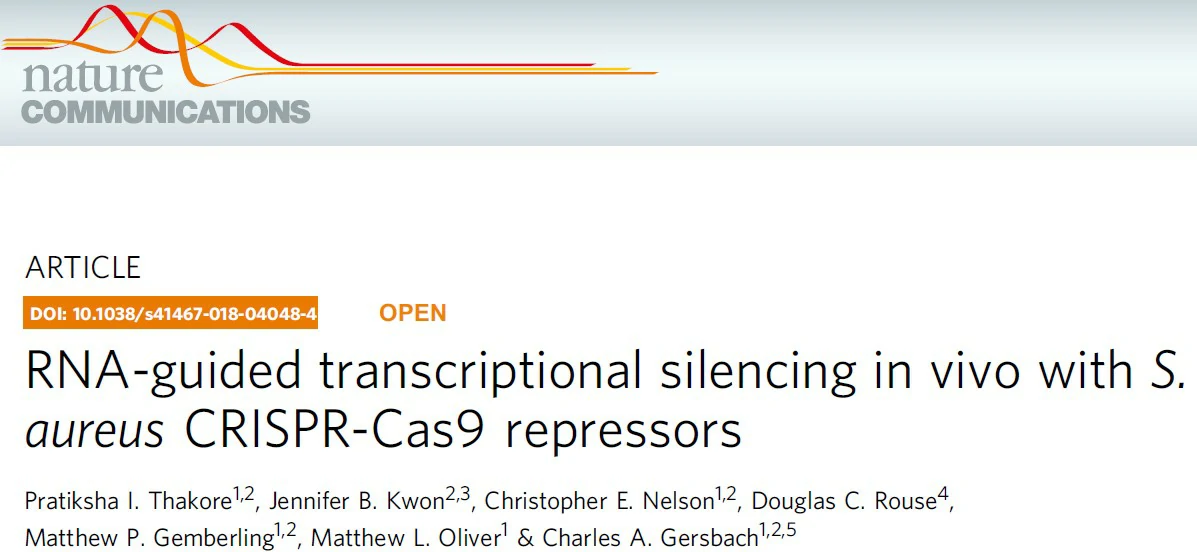Nature Communications: AAV mediated gene targeting in vivo through CRISPR-Cas9 repressors
Introduction: CRISPR-Cas9 system is a widely used tool to perform genetic editing. In recent years, this technology has been well developed. Specifically, deactivated nuclease-null Cas9 (dCas9) together with guide RNA (gRNA) can be utilized to convey various transcriptional or epigenetic modulators to the target site to regulate gene expression. One of these modulators is Krüppel-associated box epigenetic repressor motif that can be fused with dCas9 (dCas9KRAB, Cas9 repressor) to mediate gene silencing in cell culture models. To date, CRISPR-Cas9 repressors have not been adapted for systemic delivery in adult animal models. Recently, Dr. Gersbach and his research team (Department of Biomedical Engineering, Duke University) generated a Staphylococcus aureus Cas9-based repressor (dSaCas9KRAB) and applied this repressor to animal model through an AAV-mediated systemic delivery system, showing promising insights for its further development in vivo.
The results were published on April 26th in Nature Communications as a title of “RNA-guided transcriptional silencing in vivo with S. aureus CRISPR-Cas9 repressors”. In this study, Thakore et al. established dSaCas9KRAB and evaluated its efficacy as a transcriptional modulator in vitro and in vivo in adult mice. Then, they used this approach to suppress the transcription of Pcsk9 gene in adult wild-type mice. PCSK9 is an enzyme that regulates low-density lipoprotein (LDL) receptor degradation, and loss of PCSK9 is associated with low serum cholesterol level. When they delivered dSaCas9KRAB together with gRNA through AAV, Pcsk9 gene was successfully silenced and LDL cholesterol level was reduced. A single treatment of dSaCas9KRAB and gRNA showed durable silencing effects in mice. These findings suggest that RNA-guided transcriptional silencing in vivo with CRISPR-Cas9 repressor is workable and strongly expand CRISPR-Cas9 perturbation toolbox for research and gene therapy application.
References
1. Highly specific epigenome editing by CRISPR-Cas9 repressors for silencing of distal regulatory elements.
2. Mutations in PCSK9 cause autosomal dominant hypercholesterolemia.
3. Adenoviral-mediated expression of Pcsk9 in mice results in a low-density lipoprotein receptor knockout phenotype.
4. Sequence variations in PCSK9, low LDL, and protection against coronary heart disease.
5. RNA-guided transcriptional silencing in vivo with S. aureus CRISPR-Cas9 repressors.






